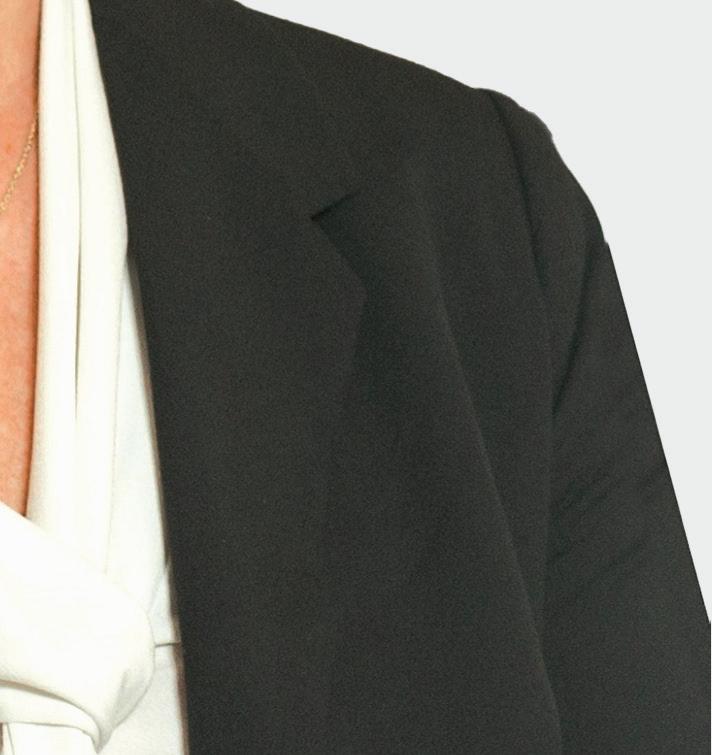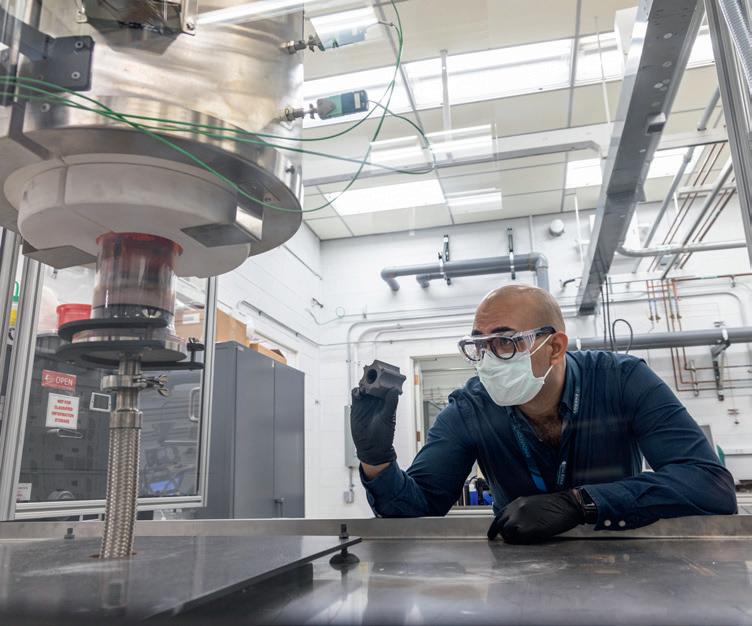
6 minute read
A PERFECT FIT
Laura Griffiths speaks to Naomi Kaempfer about 3D printed fashion and sustainability.
As creative 3D printing job titles go, it probably doesn’t get much better than the one that belongs to Naomi Kaempfer, Art, Design and Fashion (ADF) Creative Director for Stratasys.
It’s a role Kaempfer has been building towards since 2003 having led fellow 3D printing pioneer Materialise’s .MGX department, working with artists, designers and architects to explore the use of 3D technologies in creative markets. Now at Stratasys, the purpose, Kaempfer tells TCT, of the additive manufacturing (AM) leader’s ADF business is to ‘dig deep’ into 3D technologies and investigate new applications in the design, fashion, and art sector.
“We’re not looking at prototyping,” Kaempfer emphasized, but rather “ways to use 3D printing technology for manufacturing.”
ADF is an area Stratasys has been working in for a long time, with Kaempfer at the helm since 2014 overseeing projects with designers like Jenny Wu and fashion house threeASFOUR on statement jewelry and fully 3D printed garments. Having proven the effectiveness of its multi-color, multimaterial Polyjet technology across numerous creative collaborations, with artists like Julia Koerner already experimenting with printing directly onto fabric back in 2020, these efforts recently led to the launch of a new machine, the J850 TechStyle, an evolution of its J-series 3D printers, engineered towards creative markets to allow inkjet polymer 3D printing onto textiles.
“We’ve [already been] working in fashion activities, […] these were more unique pieces for ladies like Björk or Lady Gaga,” Kaempfer explained of some early projects. “In this kind of style, it was more the idea of wearing a sculpture on top of an underskirt. The fixture that we needed to figure out for that sculpture to work on the body was quite complex. Since our R&D team was able to solve the topic of 3D printing directly to textile and now the textile is carrying the dynamics of the 3D print, we can go much more into the details.”
The TechStyle can process a range of CMY Stratasys VeroVivid resins, producing over 600,000 colors, along with Stratasys Vero ContactFlex, a transparent coating which can be used to simulate different soft textures and finishes. The technology was the focal point of a collection at Milan Design Week this summer, which brought together seven design groups to produce luxury garments, accessories, and cosmetics under the theme of ‘Reflection.’
“This collection is a reflection on the last two years and what it means to us as designers and customers and anybody involved in the market,” Kaempfer said of the collection’s inspiration. “What happened in these two years? And how does it change our perspective on design, on consumerism, on production and on our society as a whole looking forward in the design sector?”
SHOWN:
GANIT GOLDSTEIN 'WEAREABLE' (PHOTO BY MICHAEL T) Three main pillars: personal space, social inclusion and mindful manufacturing, are woven into the collection which includes work from designers Karim Rashid, Jasna Rok Lab, Ganit Goldstein, FORÆVA, Assa Studio, Illusory Material, and KAIMIN. Stratasys also worked with Dyloan and the D-house fashion innovation center in Milan, where pieces from the collection were presented throughout Milan Design Week, and where Stratasys’ technology has been made the focus of a new D-House Academy for fashion designers. The resulting pieces feature a mix of textures, transparencies and themes inspired by everything from natural textures of the seasons found in Goldstein’s
SHOWN:
TRAVIS FITCH SWATCH BOOK

heavily textured “GnoMon” collection to Assa Studio’s Origami inspired customizable clutch bag.
“We never had this kind of aesthetic appear or being off ered in the past,” Kaempfer said. “If there is any possibility to bring elements on top of textile, this is usually done by hand, very labor intensive, and requires very high skill and a lot of years of knowledge. We're not competing with this or trying to throw this away. But we're off ering another solution to bring very highly complex aesthetic solutions to the textile.”
The leap from handcrafted to digital similarly requires an understanding of digital skills in order to design for and exploit the advantages of 3D. While several 3D printed garments have popped up on runways and red carpets over the last decade, 3D printing directly onto textile is a new technique, and Kaempfer shared that the ADF department has sought collaborations with architects, fl uent in designing in 3D, to work alongside designers on the project.
“There is a nice link between the architecture way of thinking and construction and the mapping out of forms in the architectural way of design that is very, very relevant here for textiles," Kaempfer said.
FASHION RE-CYCLES
In perhaps one of the best monologues in comedy-drama history, Meryl Streep’s Miranda Priestly famously uses a lumpy blue sweater (“It’s not just blue, it’s not turquoise, it’s not lapis, it’s actually cerulean.”) to provide a biting lesson on how the high fashion industry infl uences the clothing selection on your local high street. Just as the icy fashion magazine editor describes the infl uence of Oscar De La Renta’s color palette trickling down into more aff ordable, everyday attire, the infl uence of 3D printing on textiles could, depending on its accessibility, follow a similar trajectory.
“We are focused on the high-end fashion market,” Kaempfer said. “This is very, very new. Even though [Stratasys has been working] on this for quite a while offi cially, for sure this is only the fi rst iteration, the fi rst step in penetrating the fashion market. As this is starting to play a role in the high-fashion market, I'm certain that we will also see a huge evolution coming and a rollout that will help us to answer more and more needs and requirements for the fashion market and allow us to embed easier and more accessible solutions.”
While that might not materialize as a clothing rail stocked with wholly 3D printed garments, it could, very feasibly, mean taking advantage of the TechStyle’s ability to print directly onto fabric to add embellishments onto existing garments, potentially breathing new life into tired pieces. “The possibility of taking a denim that you have in the closet and applying it onto the machine and 3D printing an embellishment on top of your favourite pants or your jacket or your T-shirt,” Kaempfer said of the potential upcycling value. “The idea would be to make it very high-end but also customizing very simple elements that allow us to celebrate garments that we already have and give them a second life.”
It's something renowned fashion trend forecaster Lidewij Edelkoort has called 'an answer to a million prayers' thanks to the possibilities the machine allows for embellishment. But it also could help answer pressing calls on the industry to reduce the damaging impact of fast fashion by shifting the way we consume fashion from mass produced commodity to a more considered and customized view. That could mean reworking a pre-loved item of clothing or even using 3D technologies to customise a piece to perfectly fi t the customer, produced locally and on-demand.
“We try to understand what does it mean to be attached or to consume responsibly and to manufacture responsibly, but these two things are intertwined,” Kaempfer explained. “So we also want to educate our consumers and allow them to feel more engaged with the product. The idea that fashion has to be retailed ten seasons per year and entertain customers for a very short span of attention and then be thrown into the garbage is not wonderful for our environment. Through 3D printing we want to show the story that we can have something that is much more valuable to us as consumers to be involved in the creation of it, customize, personalize, and have aesthetics that are phenomenal and cannot be created by any other means.”“We want to educate our customers and allow them to feel engaged.”

SHOWN:
GANIT GOLDSTEIN - GNOMON (PHOTO BY YARON ATIYA)










